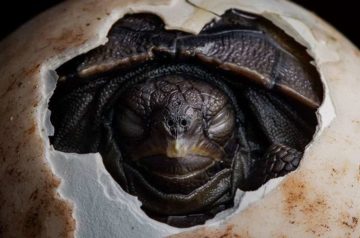Warren Cornwall in Anthropocene Magazine:
 When Charles Darwin made the famous voyage that took him to the Galapagos, he marveled at the giant tortoises that lumbered across the islands. He tried to ride them. He ate their flesh. He followed the paths they created in their ponderous travels. And he mused at their differing shapes on different islands, insights that helped steer him toward his theory of evolution by natural selection.
When Charles Darwin made the famous voyage that took him to the Galapagos, he marveled at the giant tortoises that lumbered across the islands. He tried to ride them. He ate their flesh. He followed the paths they created in their ponderous travels. And he mused at their differing shapes on different islands, insights that helped steer him toward his theory of evolution by natural selection.
“It is the circumstance, that several of the islands possess their own species of the tortoise, mocking-thrush, finches, and numerous plants, these species having the same general habits, occupying analogous situations, and obviously filling the same place in the natural economy of this archipelago, that strikes me with wonder,” Darwin wrote in his account of the trip, The Voyage of the Beagle.
What he didn’t fully appreciate—at least judging by his writings—is the critical role the enormous reptiles played in shaping the plant communities of these islands. But the return of thousands of giant tortoises to the Galapagos island of Española is giving scientists new insights into the transformative power these behemoths wield. It is the latest in a long list of scientific discoveries emerging from the tiny cluster of islands off the coast of Ecuador. And it holds out the potential for restoring island ecosystems in part by reviving reptile herbivores.
More here.
